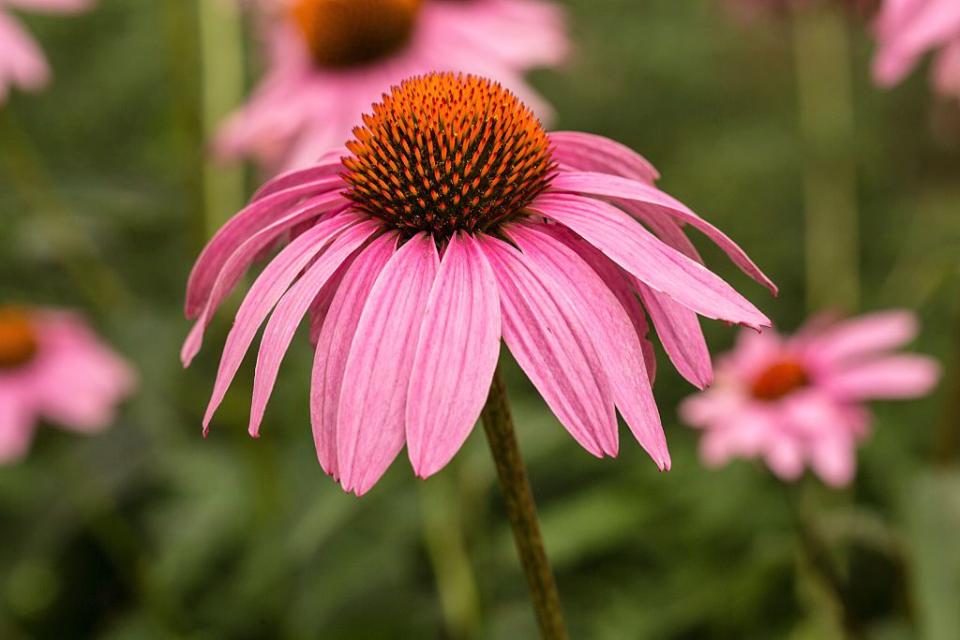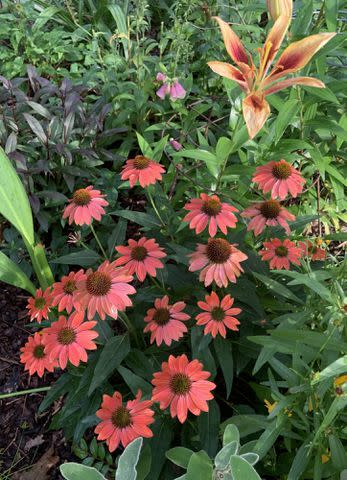When Purple Ain't Purple—The Infuriating Case Of Purple Coneflower
Purple coneflower is really pink, but no matter what it's called, this perennial is a colorful, reliable bloom that attracts pollinators.

Violets are purple. Purple heart is purple. Concord grapes are purple. Beautyberry is purple. 'Jackmanii' clematis is purple. Purple coneflower is not purple, and it's frustrating.
There is simply nothing purple about the flowers of Echinacea purpurea, one of our most popular native plants. Its blossom (above) consists of a spiny, orange cone with drooping pink petals. You might detect the slightest spritz of purple in there if you photograph the flowers in the shade and you adjust the tint in your photo program, but nobody ever stuck one of these coneflowers in a mound of 'Provence' lavender and concluded both plants were purple.
In fact, there are nine species of Echinacea native to North America, and not one has purple flowers. Some are nearly white. One is yellow. Most are pink. Not one is named pink coneflower. So, I will rename it just for this article. Grumpy can do that.
Coneflower Colors
Back in the day, pink coneflower was the only Echinacea you could buy at the garden center. Then someone said, "I wish there were other colors." Another chimed in, "I wish the petals didn't droop." Plant breeders listened and now we have a whole slew of colors—red, orange, coral, yellow, pink, white—with petals that stick out straight. Still no purple ones, though. We even have double-flowering ones with pompoms in the center. In my garden, I trialed a hybrid named E. Artisan 'Red Ombre' (below). It's compact and floriferous, and about 18 inches tall. Red blossoms slowly fade to orange-red. I like it.

Coneflower Blooms
Flattened, daisylike flowers like coneflowers combine well with spiky flowers such as blue salvia and angelonia. They bloom for a long time, especially if you deadhead the old flowers and fertilize. If you opt to let the old cones stay, they'll become feeders for finches and sources for seedlings (though not rampantly so).
Coneflowers For Pollinators
People also plant them as nectar sources for pollinators, but not all coneflowers are equal in this regard. Pollinators pretty much ignore the double types. A while back, the Mt. Cuba Center in Delaware evaluated coneflowers for their attractiveness to pollinators. Top performers included pink 'Pica Bella,' pink 'Sensation Pink,' coral-red 'Santa Fe,' white 'Snow Cone,' pink 'Glowing Dream,' white 'Fragrant Angel,' Kismet 'Intense Orange,' Kismet 'Raspberry,' the Sombrero Series, and pink 'Ruby Star.' 'Red Ombre' wasn't trialed, but my observations suggest pollinators like it.
How to Care for Coneflowers
Garden literature tells you that coneflowers are tough, carefree plants tolerant of drought. You will get much better results if you treat them nicely, however. They prefer full sun and moist, well-drained soil that contains organic matter. I mulch mine with chopped tree leaves. After you deadhead them, give them a drink of liquid fertilizer to spur new growth. They'll grow in USDA Zones 4 to 10.
Just don't call them purple.
For more Southern Living news, make sure to sign up for our newsletter!
Read the original article on Southern Living.